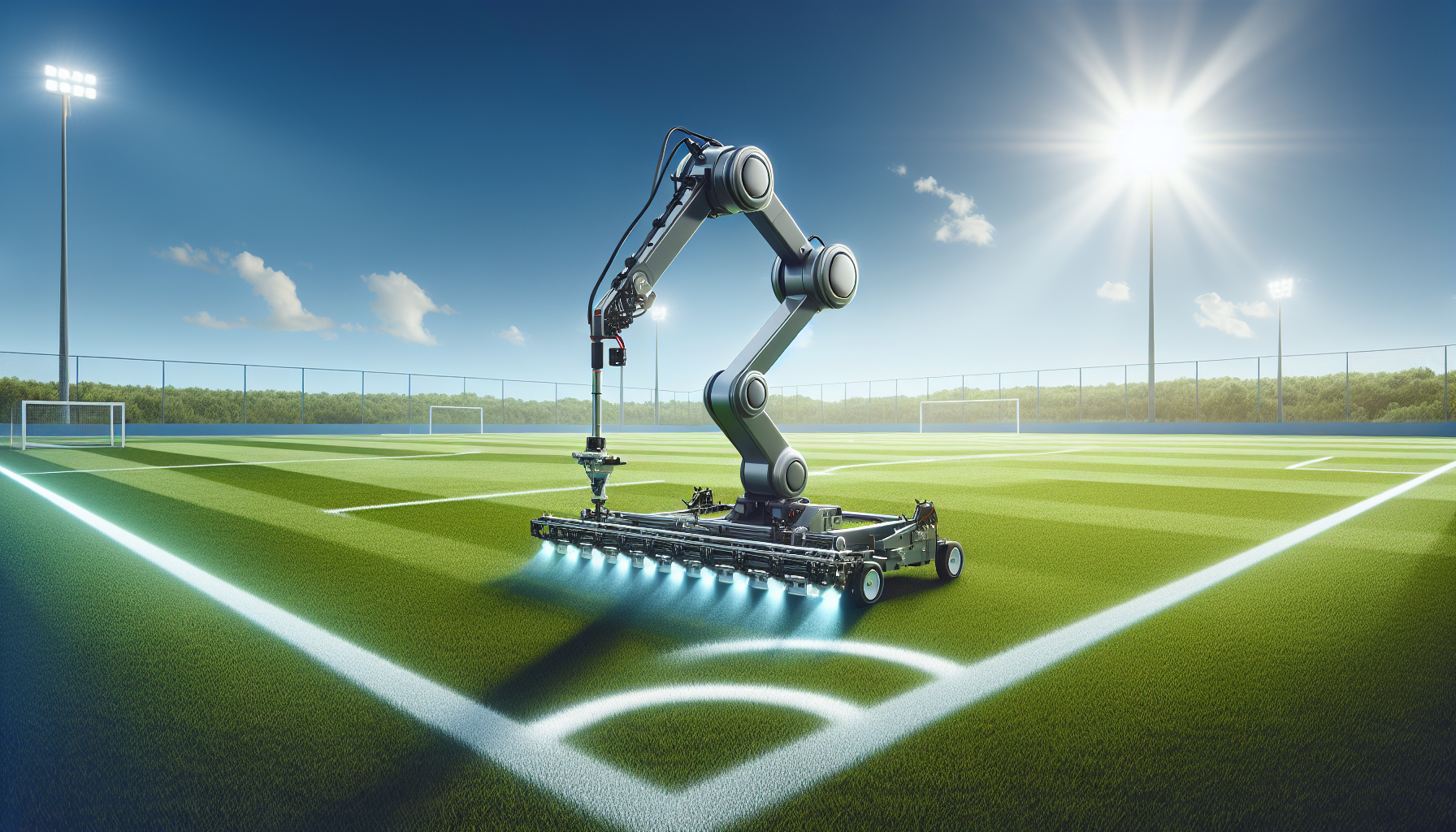The Top Reasons Why Sports Facilities Are Switching to Robotic Field Painting
In the many facets of sports, precision and efficiency are critical. In the niche of field preparation, from the meticulous lines of a soccer field to the crisp markings of a football field, accuracy is not just a preference but a necessity. In recent times, sports facilities worldwide have embraced a technological evolution by adopting robotic field painting systems. This shift is driven by a convergence of factors, each contributing to the enhanced quality, speed and cost-effectiveness of field marking processes.

Automated Precision: Redefining Field Marking Standards
Traditionally, field marking involved manual labor, often relying on human operators wielding bulky equipment. However, as laying out the soccer field diagrams, baseball diamonds or basketball courts requires precise measurements and straight lines, human error was inevitable. Robotic field painting systems revolutionize this process by offering unparalleled precision, with robotic painters utilizing advanced GPS technology and sophisticated algorithms to navigate the field with pinpoint accuracy. Equipped with precise sensors, these machines guarantee uniform line widths and angles, eliminating inconsistencies that might arise from human operation. The result is immaculate field markings that meet professional standards, enhancing the overall aesthetic appeal of sports facilities.
Time Efficiency: Streamlining Operations with Automation
In sports management, time is of the essence—every minute spent on field maintenance is a minute taken away from crucial training sessions or games. Robotic field painting systems emerge as a solution to streamline operations and maximize efficiency; dissimilar to manual methods requiring significant manpower and time investment, robotic painters can swiftly mark an entire field in a fraction of the time required by traditional techniques. These machines operate autonomously, efficiently covering vast areas without compromising on accuracy. As a result, sports facilities can optimize their scheduling, dedicating more time to training and events rather than to tedious maintenance tasks.
Cost-Effectiveness: Long-Term Savings and ROI
Although the initial investment in robotic field painting technology may seem substantial, its long-term benefits far outweigh the costs. Sports facilities stand to gain significant savings in labor expenses as the need for manual field marking crews diminishes. Moreover, the precise application of paint by robotic systems minimizes material waste, further reducing operational costs. Additionally, the durability of robotic field markings provides prolonged intervals between repaints, saving on paint and maintenance expenses over time. When viewed through the lens of long-term savings and return on investment (ROI), the adoption of robotic field painting systems emerges as a financially prudent decision for sports facility management.
Environmental Sustainability: Minimizing Ecological Footprint
In an era increasingly defined by environmental awareness, sports facilities are under pressure to minimize their ecological footprint. Traditional field painting methods often involve the use of environmentally harmful paints and solvents, contributing to pollution and ecosystem degradation. Robotic field painting systems offer a sustainable alternative; by utilizing eco-friendly paints and optimizing paint application, robotic painters significantly reduce the environmental impact associated with field marking. Moreover, the efficiency of these systems translates to fewer resources consumed, further promoting sustainability. As sports facilities align with eco-conscious practices, the adoption of robotic field painting technology becomes integral to their environmental stewardship efforts.
Enhanced Flexibility: Adapting to Varied Sporting Needs
Sports facilities are dynamic environments that cater to a multitude of sporting activities, each with unique field marking requirements. Robotic field painting systems offer unparalleled flexibility, capable of adapting to diverse sporting needs with ease. Between configuring intricate soccer field layouts, marking out tennis courts and delineating track and field lanes, robotic painters excel in versatility. Advanced software allows operators to program custom field designs quickly, ensuring swift transitions between different sporting events. This adaptability enhances the operational efficiency of sports facilities and elevates the overall user experience for athletes and spectators equally.
Conclusion
In sports facility management, the adoption of robotic field painting technology represents a paradigm shift towards precision, efficiency and sustainability; from optimizing field marking processes to enhancing operational flexibility, these automated systems offer a myriad of benefits that transcend traditional manual methods. As sports facilities worldwide embrace technological innovation, the era of robotic field painting heralds a new standard of excellence in sports infrastructure management.
The Top Reasons Why Sports Facilities Are Switching to Robotic Field Painting to SEC Sports Fan Blog





New! Facebook Comments
Leave a comment about this article in the box below and share it with your Facebook friends.